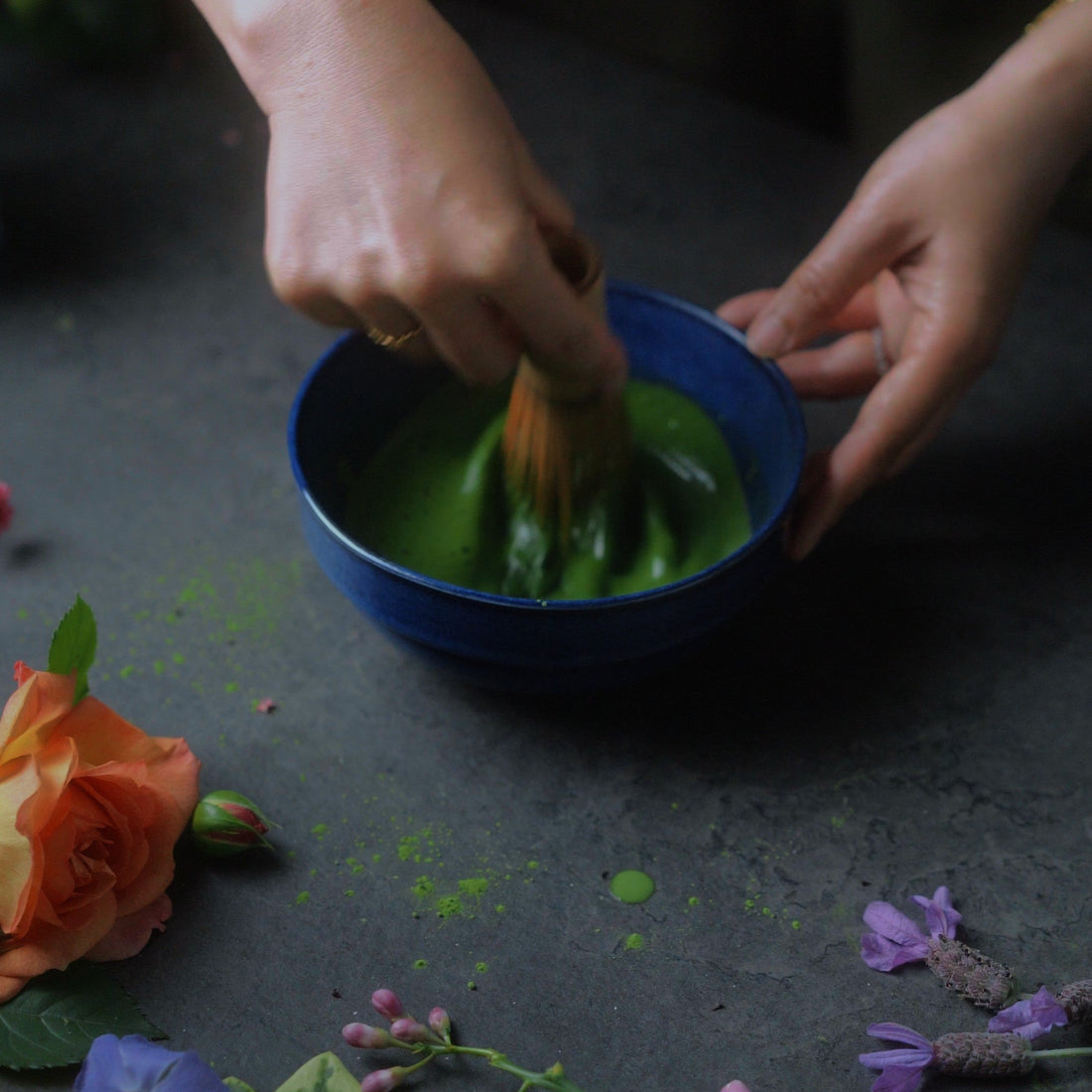
Where the Highest Quality Matcha Really Comes From | Zenergy Tea
Share
Summary
The highest quality matcha begins in the mist.
From the fog-wrapped highlands of Shizuoka to the quiet slopes of Uji and Nishio, Japan’s best matcha grows where light, air, and patience meet. The secret isn’t only in the leaf but in the calm way the farmers let time move.
Where the Highest Quality Matcha Really Comes From
I have always loved the fog.
It makes the real world feel slightly unreal, soft around the edges. The air smells sweet, a little wet, and full of waiting. Maybe that is why I chose to live in Napa Valley. In the morning, the fog settles low against the mountains, wrapping everything — people, trees, animals, even the slow-moving hot air balloons. I think people here love it too. It makes time gentle.
It reminds me of Shizuoka.
The first time I saw the tea fields there, the fog looked alive. It breathed. You could see how the light filtered through layers of green, how every leaf seemed to hold its own quiet. That’s when I began to understand why the highest quality matcha could only come from places like this.

Shizuoka: The Highlands of Mist
Shizuoka lies between mountains and the Pacific, a landscape made of fog and patience.
Every morning, cool air from the sea rises to meet warm mountain wind. The mist covers the tea fields like a blanket, slowing everything down — growth, evaporation, and even the farmer’s rhythm.
Here, many tea gardens still practice the Chagusaba method, a UNESCO-recognized system where dried grass is laid between the rows of tea plants. It keeps the soil warm, feeds it with nutrients, and balances acidity naturally. The result is a softer sweetness and a long aftertaste that feels almost creamy.
The farmers here have worked the same land for five generations. They don’t talk much about quality. They talk about weather, soil, and light — as if those words already include everything you need to know.
Uji: Where History Still Whispers
If Shizuoka is fog and rhythm, Uji is silence and depth.
Located south of Kyoto, Uji is where matcha was first made in Japan more than 800 years ago. Even now, the air there feels old in a beautiful way. You can still find small stone mills turning slowly in family workshops, each producing only a few tins a day.
The color of Uji matcha is a deeper green, rich and dense, with an aroma that feels like walking through a bamboo grove after rain. It’s known for its sweetness — not the sugary kind, but the one that opens quietly and stays in the back of your throat.
Farmers here say matcha should taste “like sunlight you can drink.”
Maybe that’s why the tea feels both grounding and dreamlike at once.

Nishio: The Balance of Warmth and Calm
Nishio, in Aichi Prefecture, has a different voice. The climate is warmer, the light softer, and the tea leaves grow with an easy sweetness.
Unlike Uji or Shizuoka, where the terrain is steep, Nishio’s flat fields allow for broad, even shading. The best farmers there still use woven reed screens instead of plastic. Under this filtered light, the leaves stay tender and rich in amino acids.
Matcha from Nishio often tastes round and smooth, perfect for daily use. It reminds me of conversations with farmers who laugh easily, their hands stained green from harvest. Theirs is not a story of struggle, but of steady care — every movement practiced, every season expected.

Where All High Quality Matcha Begins
When you look closely, every great matcha field shares the same rhythm.
The fog, the shade, the slow hand.
The leaves are always picked young, steamed, dried, and stone-milled at a pace that feels closer to breathing than to work. There are no shortcuts, no loud machines, no rush.
That’s why high quality matcha isn’t only a product of a place. It’s the result of how people choose to move through time.
Sometimes I think about the farmers standing in those fields before sunrise, wrapped in fog, listening to the sound of the dew. Maybe they don’t call it meditation, but that’s what it is.
The People Behind the Fog
Everywhere I went in Japan, the best matcha didn’t begin in factories or markets.
It began with people who wake before the sun, who still touch the soil before checking the sky.
They don’t hurry. They don’t ask if the world still cares about tea.
They simply work in rhythm with something older than themselves.
One farmer in Shizuoka told me that the tea leaves know when you’re patient.
He said it quietly, not as a metaphor but as fact.
When I asked how he defines “quality,” he smiled and said, “When the fog stays, I know the tea will be good.”
In that moment, I realized “high quality” wasn’t a description.
It was a relationship — between people and weather, between attention and time.
The matcha we drink today carries all of that.
Every soft sweetness, every calm aftertaste is a memory of someone’s patience,
of hands that didn’t rush and mornings that began before the world was awake.
Summary
The highest quality matcha doesn’t come from a single place.
It comes from fog, from patience, and from hands that move slowly.
When you taste it, you’re tasting more than a drink.
You’re tasting the light that didn’t reach the leaf, the air that lingered above the field, and the silence that made it grow.
You can explore ceremonial matcha from these quiet regions at ZenergyTea.com

Aileen Gong is a food creator, sommelier, and graduate of the School of the Art Institute of Chicago.
She shares quiet, beautiful recipes that celebrate simple rituals and mindful flavors.
She grows blueberries in pots, hand-whisks her matcha, and believes every drink can be a small moment of peace.
1. Where does the highest quality matcha come from?
Japan’s best and most premium matcha comes from regions like Shizuoka, Uji, and Nishio, where the misty climate and traditional shading methods create a rich umami flavor and bright green color.
2. What makes these regions special for growing matcha?
These regions from Japan have the perfect balance of humidity, temperature, and soil nutrients that allows tea plants to grow slowly and develop high levels of amino acids, giving the matcha its sweet depth.
3. Is Uji matcha better than Shizuoka matcha?
Each region offers different character. Uji matcha is known for deep sweetness and aroma, while Shizuoka matcha is fresh and smooth with a long aftertaste. Both can be high quality when grown with care.
4. Does fog really affect the flavor?
Yes. Fog regulates temperature and light exposure, preventing the leaves from drying too fast. This preserves chlorophyll and increases umami compounds like L-theanine.
5. How do I know if my matcha is from Japan?
Check the label for region and origin. Authentic Japanese matcha will list its prefecture, often with terms like “Uji,” “Shizuoka,” or “Nishio.”


